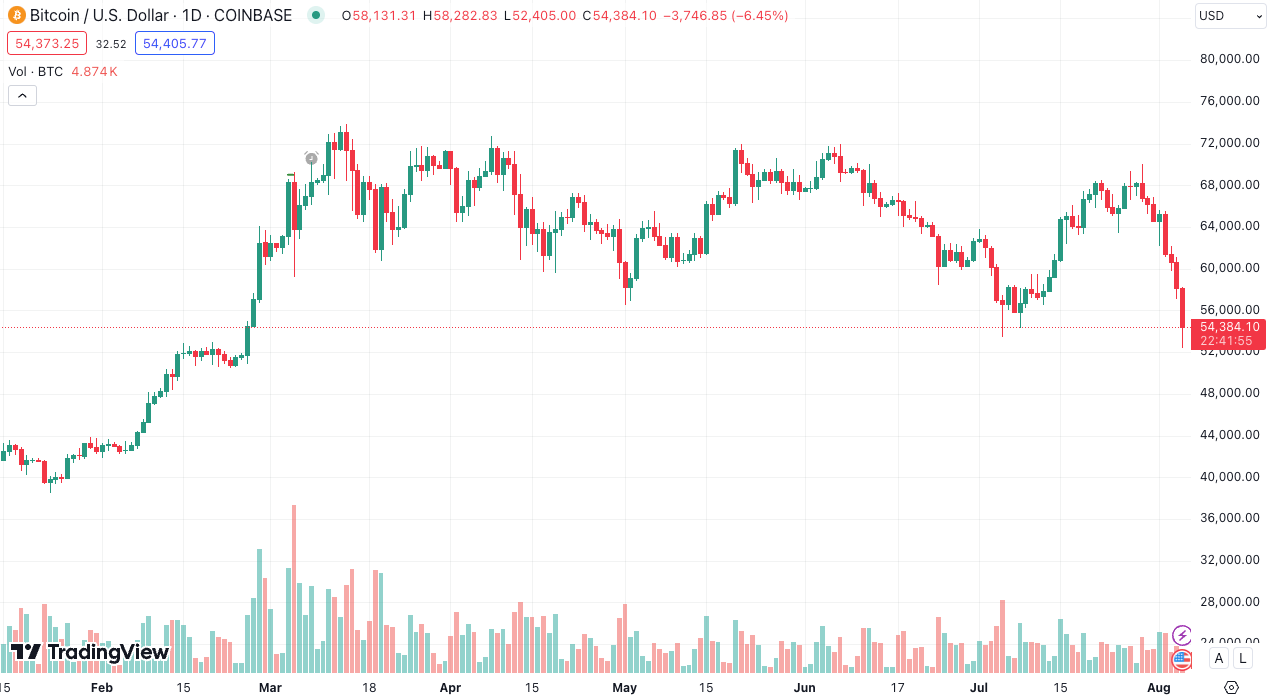Bitcoin sustainability issues have been brought to light by Galaxy Research, raising concerns particularly surrounding layer-2 solutions such as rollups. Despite being viewed as a viable method to keep Bitcoin transactions inexpensive, speedy, and decentralized, the recent report suggests potential long-term unsustainability for Bitcoin rollups. Published on Friday, Aug. 2, the report by Galaxy analyst Gabe Parker emphasises the difficulties associated with posting data on the Bitcoin base layer as a significant obstacle for rollups.

Challenges Facing Bitcoin Rollups
Parker elaborates that for Bitcoin rollups to remain viable, they must independently generate considerable revenue from transaction fees within their networks. This revenue is contingent upon a sufficient number of users willing to pay for transactions conducted on layer-2 networks. Rollups function by aggregating numerous transactions, compressing them into a single batch, and subsequently posting a summary of this batch back to the Bitcoin blockchain.
Within Bitcoin rollups, the main blockchain serves as a “data availability layer,” enabling any standard Bitcoin node to reconstruct the rollup network’s most recent state whenever required. However, Bitcoin blocks have a storage limit of 4 megabytes (MB), and the process of posting data incurs significant usage. Each transaction for data posting can utilize up to 400 kilobytes (0.4MB) of block space, which means it can occupy approximately 10% of an entire block.
Competitive Dynamics and Financial Strain
The dynamics of competition among rollups further indicate that multiple systems will attempt to post their data every six to eight blocks, which may lead to escalating base-layer fees. These rising costs could potentially deter smaller transactions from utilizing the services of Bitcoin rollups. To endure amid these Bitcoin sustainability issues, rollups must outcompete one another in generating fee revenue, which will dictate their chances of retaining priority in the limited block space available.
Galaxy Research estimates that in a low-fee setting, where regular transactions cost around ten sat/vByte (satoshis per vByte), Bitcoin rollups might face monthly expenses of $460,000 to sustain Bitcoin’s security. In scenarios with higher fees, around 50 sat/vByte, the monthly expenses could skyrocket to $2.3 million.
Alexei Zamayatin, co-founder of “Build on Bitcoin” (BOB), which aims to connect Ethereum with Bitcoin through a hybrid rollup, shares an opinion stating that Bitcoin rollups can be just as cost-effective as Ethereum’s rollups. However, he opposes using Bitcoin’s main chain solely for data availability. Zamayatin advocates for alternatives such as Celestia or a merge-mined Bitcoin sidechain, which may be cheaper yet may compromise some of Bitcoin’s complete decentralization and security.

Responding to Galaxy’s findings on Twitter, Zamayatin remarked, “No one will use Bitcoin L2s if they are 100x more expensive than Ethereum L2s, just because ‘it is on Bitcoin.’ Good news: They won’t be more expensive.” This sentiment captures a sentiment prevalent in the cryptocurrency community about the logical need to solve Bitcoin sustainability issues in order to win the battle for the adoption and growth of Bitcoin rollups.
Bitcoin Price Plummets to Below $53,000
In a separate incident affecting the broader cryptocurrency market, Bitcoin experienced a sudden downturn below $53,000, resulting in the liquidation of over $600 million in leveraged long positions. This sharp decline, marking Bitcoin’s price dropping as low as $52,500 on August 5, came swiftly, as BTC plummeted 10% from $58,350 in a mere two-hour window.
Following this drop, Bitcoin has somewhat recovered and is currently trading around $54,384, according to TradingView data. Notably, the last occurrence of Bitcoin trading below $53,000 was on February 26 earlier this year, after which it rallied in the wake of the approval of spot Bitcoin exchange-traded funds (ETFs) in the United States.

Ether (ETH) also saw a significant decrease, plummeting 18% from $2,695 to as low as $2,118 during this period. As of now, ETH is trading around $2,358. The recent downturn has led to a staggering loss of over $740 million in leveraged positions across the crypto market within 24 hours; specifically, over $644 million in leveraged long positions were liquidated, according to CoinGlass data.
Bitcoin Sustainability Issues in Focus Amid Market Turmoil
The hardest-hit traders were those betting on Ether, with leveraged longs amounting to $256 million extinguished, while $231 million in Bitcoin longs faced liquidation. This massive sell-off correlated with a notable downturn of 7.1% in the Japanese stock market, particularly affecting bank stocks, which had their poorest performance since 2008 due to a central bank interest rate hike.
The swift flash crash resulted in the total crypto market cap losing as much as $500 billion over the last three days, marking the largest 72-hour loss observed in more than a year. Market analysts have linked the upheaval to weaker job reports in the United States, slowing growth among leading tech companies, and concerns surrounding mass selling by crypto trading firm Jump Crypto. Thus, the discourse around Bitcoin sustainability issues continues to be of paramount importance in light of these developments. Stay tuned for more updates on this evolving story on the Turkish NY Radio.




























































































![BitTorrent [New]](https://s2.coinmarketcap.com/static/img/coins/64x64/16086.png)
















